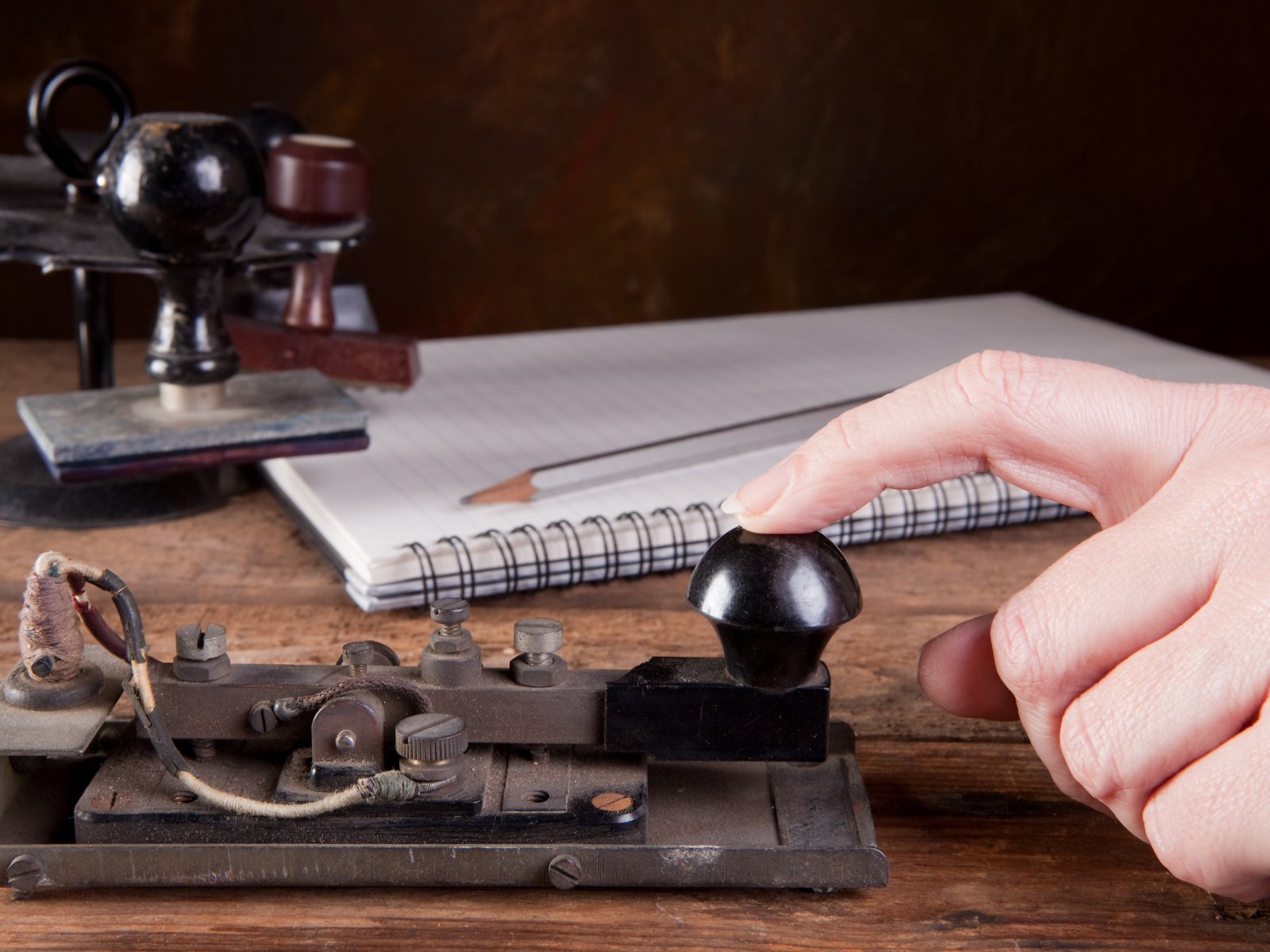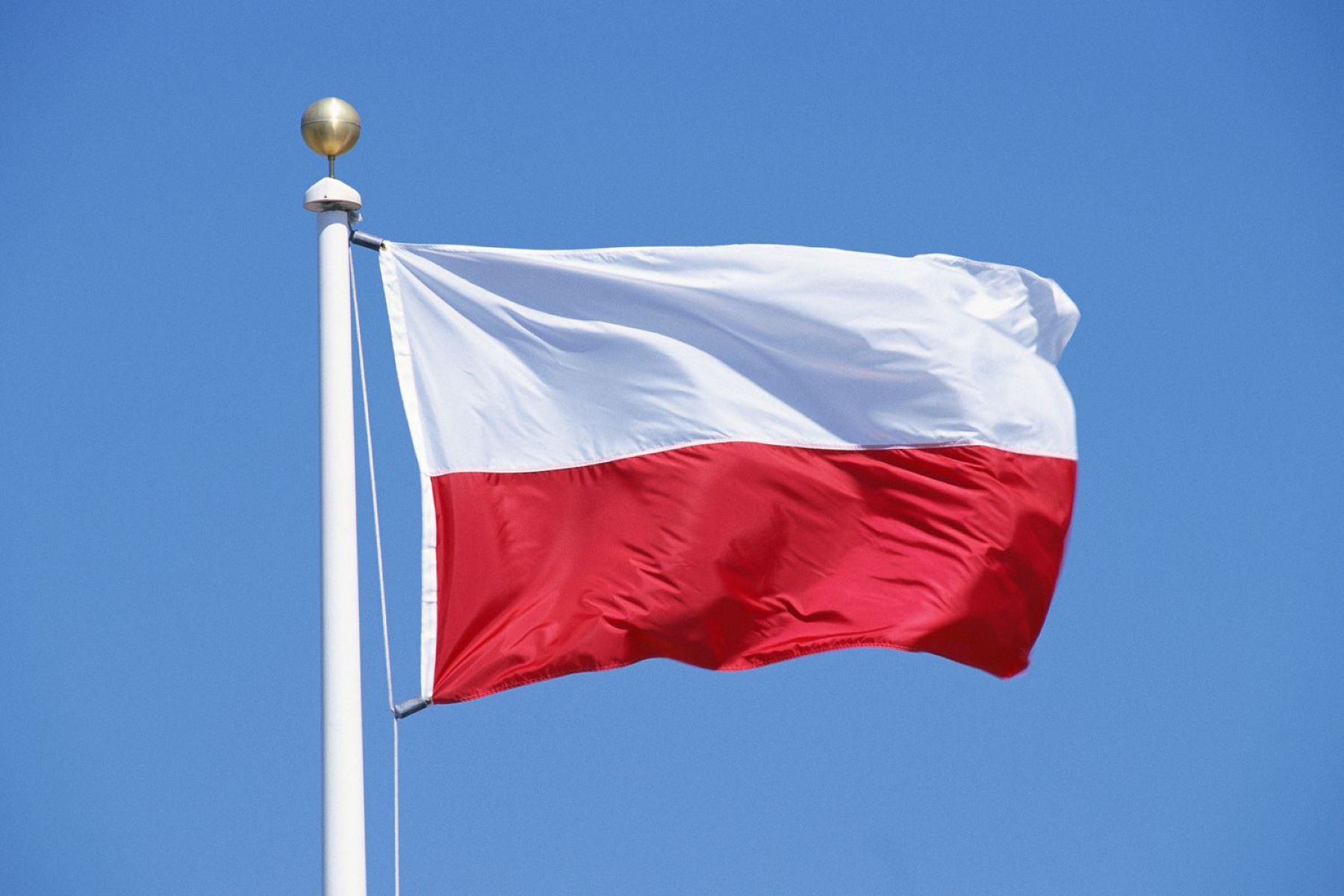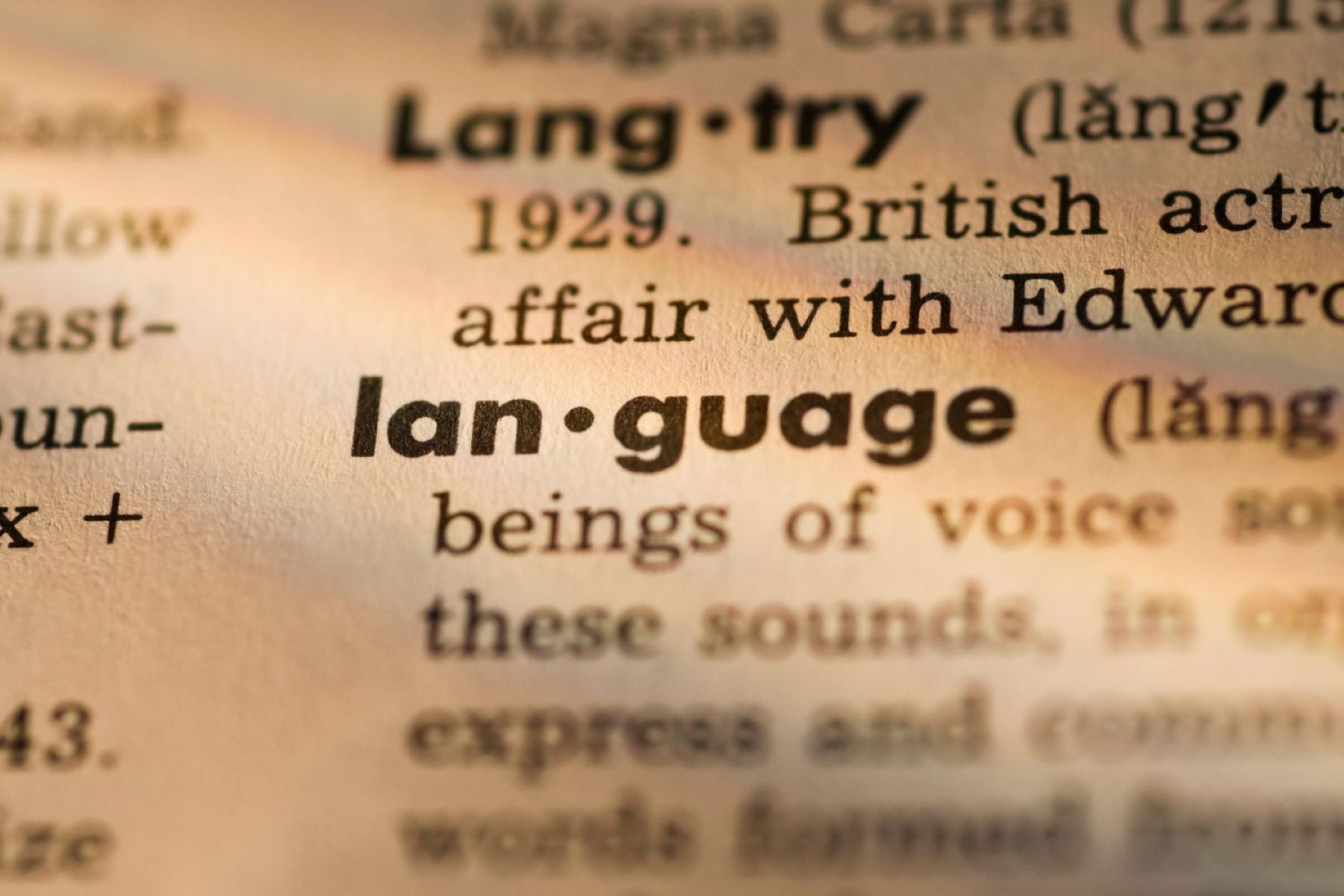Home>Language and Grammar>Learn The Secret Language Of Love: Morse Code Revealed!


Language and Grammar
Learn The Secret Language Of Love: Morse Code Revealed!
Published: January 20, 2024
Unlock the mystery of Morse code and discover the secret language of love. Learn all about Morse code and its significance in language and grammar. Explore the fascinating world of communication through dots and dashes!
(Many of the links in this article redirect to a specific reviewed product. Your purchase of these products through affiliate links helps to generate commission for Regretless.com, at no extra cost. Learn more)
Table of Contents
Introduction
Welcome to the fascinating world of Morse code, a captivating form of communication that has transcended time and technology. In this article, we will embark on a journey to unravel the secrets of Morse code, a language steeped in history and imbued with a sense of romance and mystique.
Morse code, developed by Samuel Morse and Alfred Vail in the early 1830s, revolutionized long-distance communication. Originally designed for telegraphy, this ingenious system of dots and dashes soon became synonymous with the transmission of vital information, from urgent messages in times of war to everyday communications across vast distances.
As we delve into the intricacies of Morse code, we will uncover its enduring significance and explore its unique role in the realm of love and romance. Beyond its practical applications, Morse code has captured the imagination of many as a symbol of enduring love, with its rhythmic patterns and concealed messages adding an enchanting layer to expressions of affection.
Join us as we unravel the allure of Morse code, from its historical roots to its contemporary significance, and discover the timeless appeal of this enigmatic language. Whether you are a history enthusiast, a language aficionado, or a hopeless romantic, the allure of Morse code is certain to captivate your imagination and kindle a newfound appreciation for this timeless form of communication.
Read more: How To Learn Spanish For Non-Speakers
History of Morse Code
The history of Morse code is a testament to human ingenuity and the relentless pursuit of effective communication. It all began in the early 1830s when Samuel Morse, an American artist and inventor, joined forces with Alfred Vail, a skilled mechanic, to develop a revolutionary system of long-distance communication. Their collaboration resulted in the creation of Morse code, a method of encoding text characters as sequences of dots and dashes.
The development of Morse code was closely intertwined with the emergence of the electric telegraph, a groundbreaking invention that enabled messages to be transmitted across vast distances at unprecedented speeds. This innovation heralded a new era of communication, transforming the way information was relayed and revolutionizing industries such as transportation, commerce, and diplomacy.
Morse and Vail's system of communication quickly gained traction, with its practical applications extending far beyond the realm of telegraphy. As telegraph networks expanded across continents, Morse code became the lingua franca of global communication, facilitating the swift exchange of vital information and shaping the course of history.
During the 19th and early 20th centuries, Morse code played a pivotal role in various historical events, including wartime communications, maritime navigation, and the coordination of railway operations. Its reliability and efficiency made it indispensable in scenarios where instantaneous and accurate communication was paramount.
The widespread adoption of Morse code as a universal means of communication underscored its enduring significance. Its influence transcended geographical and cultural boundaries, becoming a symbol of connectivity and unity in an increasingly interconnected world.
Despite the advent of more advanced communication technologies, Morse code has not faded into obscurity. Its legacy lives on, preserved by enthusiasts and practitioners who recognize its historical importance and appreciate its elegance as a form of communication. In fact, Morse code continues to be taught and used in various capacities, serving as a testament to its enduring relevance in the digital age.
The history of Morse code stands as a testament to the power of innovation and the enduring impact of effective communication. Its evolution from a revolutionary telegraphic system to a timeless symbol of human ingenuity underscores its enduring legacy and its profound influence on the way we connect and communicate.
How Morse Code Works
Morse code operates on a simple yet ingenious principle, utilizing a series of dots and dashes to represent letters, numerals, and punctuation. Each character in the English alphabet, as well as numerals and special symbols, is meticulously encoded using combinations of short and long signals, known as "dots" and "dashes," respectively.
The fundamental building blocks of Morse code are the dot and the dash, also referred to as "dits" and "dahs." These elements are arranged in specific sequences to form the distinct patterns associated with individual letters and symbols. The duration of a dash is approximately three times longer than that of a dot, creating a clear distinction between the two signals.
To transmit a message in Morse code, the sender utilizes a telegraph key or a similar input device to input the desired sequence of dots and dashes. Each character is represented by a unique combination of these signals, allowing for the accurate encoding and transmission of textual information.
The encoding scheme of Morse code is designed to prioritize efficiency and clarity, with frequently used letters assigned shorter sequences of dots and dashes. For instance, the letter "E" is represented by a single dot, reflecting its high frequency in the English language, while less common letters such as "Q" and "Z" are denoted by longer and more intricate patterns.
The rhythmic cadence of Morse code, characterized by the deliberate arrangement of dots and dashes, enables skilled operators to decipher messages with remarkable speed and accuracy. This rhythmic quality also lends Morse code a distinct auditory appeal, evoking a sense of precision and order that sets it apart from other communication methods.
In addition to its auditory dimension, Morse code can also be conveyed visually through the use of flashing lights or illuminated signals, a technique known as "visual Morse." This versatile feature has made Morse code invaluable in scenarios where sound-based communication is impractical, such as maritime signaling and military operations.
The elegance of Morse code lies in its simplicity and adaptability, allowing it to transcend technological limitations and remain relevant in diverse communication contexts. Whether transmitted through telegraphy, radio signals, or visual displays, Morse code continues to exemplify the enduring power of effective communication through its timeless encoding system and distinctive rhythmic patterns.
Morse Code in Love and Romance
Amidst its historical significance and practical applications, Morse code has also found a place in the realm of love and romance, adding a touch of mystery and sentiment to heartfelt expressions. The rhythmic patterns of dots and dashes have been ingeniously woven into declarations of affection, creating a unique language of love that transcends traditional forms of communication.
One of the most enchanting aspects of Morse code in the context of love is its potential for secrecy and intimacy. Couples have embraced Morse code as a clandestine means of conveying private messages, allowing them to communicate openly in public settings while preserving the confidentiality of their exchanges. This clandestine aspect of Morse code adds an element of intrigue to romantic gestures, fostering a sense of shared intimacy and understanding between partners.
The use of Morse code in love and romance extends beyond mere novelty, as it has become a poignant symbol of enduring affection and connection. From whispered confessions to discreetly exchanged messages, Morse code serves as a tangible representation of the emotional bonds that unite individuals in love. Its rhythmic cadence and concealed nature infuse romantic communications with an air of enchantment, evoking a sense of shared secrecy and intimacy that deepens the emotional resonance of these expressions.
The enduring appeal of Morse code in love and romance is further exemplified by its incorporation into personalized gifts and tokens of affection. From intricately designed jewelry featuring Morse code inscriptions to bespoke artworks and keepsakes, the incorporation of Morse code adds a layer of meaning and significance to romantic gestures. These personalized manifestations of Morse code serve as enduring mementos, encapsulating the depth of emotion and connection shared between individuals in love.
Moreover, the use of Morse code in romantic contexts transcends cultural and linguistic barriers, offering a universal language of love that resonates across diverse backgrounds. Its timeless elegance and adaptability make Morse code a compelling medium for expressing affection, transcending the limitations of spoken and written language to convey heartfelt sentiments in a manner that is both timeless and deeply personal.
In essence, Morse code has carved a niche for itself in the realm of love and romance, offering a captivating means of communication that transcends traditional expressions of affection. Its ability to infuse romantic gestures with an air of secrecy, intimacy, and enduring significance underscores its enduring allure as a language of love, enriching the tapestry of human connections with its timeless appeal.
Learning Morse Code
Learning Morse code is an enriching endeavor that offers a gateway to a unique form of communication with historical significance and enduring appeal. Whether motivated by a fascination with languages, a desire to connect with the past, or a penchant for exploring unconventional means of expression, mastering Morse code can be a rewarding and intellectually stimulating pursuit.
Embarking on the journey to learn Morse code begins with an exploration of its fundamental principles and encoding system. While the concept of dots and dashes may initially appear daunting, the elegance of Morse code lies in its structured simplicity. Aspiring learners can start by familiarizing themselves with the basic patterns and rhythmic sequences that constitute Morse code, gradually building proficiency and fluency through consistent practice.
A variety of resources are available to facilitate the learning process, ranging from online tutorials and interactive applications to traditional study guides and reference materials. These resources often feature interactive exercises and mnemonic aids designed to reinforce the association between characters and their corresponding Morse code representations, fostering a multi-sensory approach to learning that enhances retention and comprehension.
In addition to digital tools, the acquisition of Morse code proficiency can be further augmented through practical application and real-world practice. Engaging in simulated telegraphy exercises, participating in Morse code conversations with fellow enthusiasts, and immersing oneself in the auditory and visual aspects of Morse code communication can significantly enhance the learning experience, fostering a deeper appreciation for its rhythmic cadence and expressive potential.
Furthermore, the journey of learning Morse code offers a gateway to historical exploration, providing insight into the pivotal role of Morse code in shaping global communication and connectivity. Delving into the historical context of Morse code and its impact on diverse fields, from military operations to maritime signaling, enriches the learning experience by illuminating the enduring relevance and significance of this timeless form of communication.
Ultimately, the process of learning Morse code transcends the acquisition of a practical skill, evolving into a captivating journey of discovery and appreciation for a language steeped in history and imbued with a sense of romance and mystique. As individuals embrace the challenge of mastering Morse code, they embark on a voyage that not only cultivates linguistic proficiency but also fosters a profound connection with a form of communication that continues to captivate the imagination and inspire admiration for its enduring legacy.
Conclusion
In conclusion, the allure of Morse code transcends its historical significance and practical applications, encompassing a rich tapestry of romance, intimacy, and enduring relevance. From its humble origins as a revolutionary telegraphic system to its contemporary resonance as a symbol of enduring love, Morse code stands as a testament to the timeless power of effective communication.
The historical journey of Morse code, intertwined with the evolution of global connectivity, underscores its profound impact on the course of human history. Its role in facilitating swift and reliable communication, from wartime operations to maritime signaling, has left an indelible mark on the fabric of society, shaping the way we connect and convey vital information across vast distances.
Moreover, Morse code's unique place in the realm of love and romance adds a layer of enchantment to its legacy. The clandestine nature of Morse code communication, coupled with its rhythmic cadence and concealed messages, has elevated it to a cherished language of love. By infusing romantic gestures with an air of secrecy and intimacy, Morse code has become a timeless symbol of enduring affection, transcending linguistic and cultural barriers to unite individuals in heartfelt expressions of love.
The journey of learning Morse code offers a gateway to historical exploration and intellectual enrichment, fostering a deep appreciation for a form of communication that continues to captivate the imagination and inspire admiration for its enduring legacy. As individuals embark on the endeavor to master Morse code, they not only acquire a practical skill but also immerse themselves in a language steeped in history and imbued with a sense of romance and mystique.
In essence, Morse code remains a testament to human ingenuity, adaptability, and the enduring significance of effective communication. Its rhythmic patterns and concealed messages continue to captivate the imagination, offering a timeless language that transcends the limitations of spoken and written communication. As we reflect on the enduring allure of Morse code, we are reminded of its profound impact on the way we connect, communicate, and express the deepest sentiments of the human heart.














